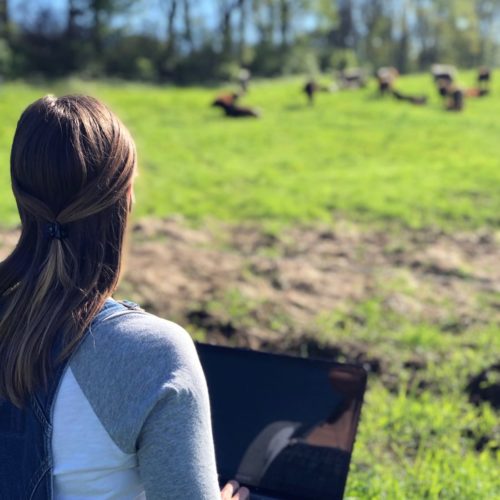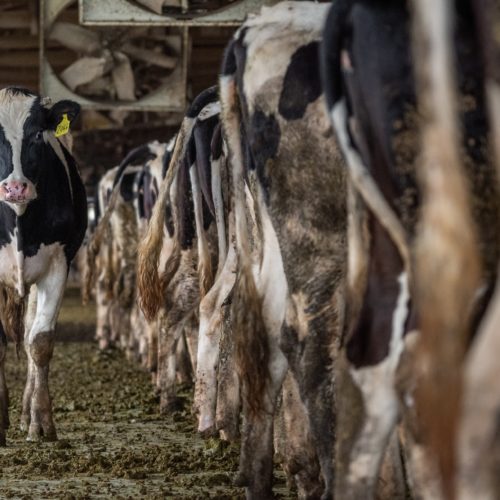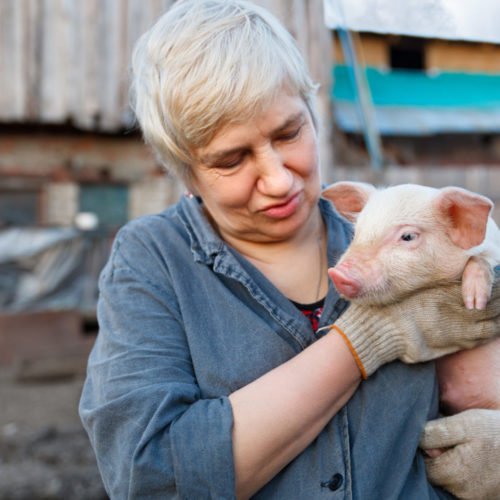Annual Meeting Recap


2017 Annual Meeting
Agriculture & Rural Affairs Program
Recap
The 57th Annual Meeting of the Council of State Governments-Eastern Regional Conference, held August 13 through 16, 2017 at the Mohegan Sun Resort in Uncasville, Connecticut, was the site of much information gathering and relationship building among the attendees.
The Agriculture & Rural Affairs Committee had a particularly full slate of meetings, discussions and site visits. In addition, the plenaries, roundtables, workshops and receptions and dinners filled the three days to the brim with things to do and information to absorb.
State Updates
The Ag Committee began the conference on Monday morning with our ever-popular State by State Recap. This is the opportunity to hear from members from each state the pressing issues that they have been facing in their committees this year. Each year it is apparent that the 11 member states in our ERC region experience the same challenges to our farmers and rural areas. It is through these discussions that we learn of solutions to our shared problems.
Among the issues discussed were tax credits to assist farmers facing low prices and high costs, agritourism laws, deer depredation, legalization of marijuana, neonics and pollinator protection, drought, Lyme Disease and ticks, aging farmer demographics, industrial hemp expansion, reporting of opioid prescriptions by veterinarians for animal use, dog licensing law changes, puppy mills, noxious weeds identification, prohibition of mango exportation from the U.S. Virgin Islands, farm labor issue, loss of low grade pulp plants, water quality, and FSMA implementation. It was a lively discussion, with many ideas shared.
Washington Updates
The second presentation at Monday’s morning session was by Fran Boyd, partner in Meyers & Associates in Washington, D.C., who has been CSG-ERC’s ‘Washington insider’ for many years. Fran assured us that the northeastern states were being heard in the recently initiated Farm Bill negotiations. One problem he sees in the agricultural sector in Washington is the lack of appointments to the U.S. Department of Agriculture. Sonny Perdue, the Secretary of Agriculture, is assisted by only a handful of helps in his department, making meaningful progress in issues difficult if not impossible.
The recent Budget for Agriculture is particularly draconian. The question of whether Congressional leadership is capable of getting an Appropriations bill passed is yet to be answered. There is a possibility that Washington will be operating under a Continuing Resolution, which might be kick started in September and dealt with in October and November.
There are two big issues that must be addressed in the 2018 Farm Bill – Dairy and Cotton. The Margin Protection Program in the Dairy sector has never functioned as it was originally intended, and the opposition is clamoring for a fix to the problem. Cotton, on the other hand, has no program and is looking for one to be offered in this Farm Bill.
The Nutrition Title of the Farm Bill, which is 87% of the total funding for Agriculture, might be facing some changes, including work requirements, and a cap of the money going to the states. Another change that might be proposed is a change in who can offer the SNAP benefits. Some want to allow only large grocery stores to participate in the program. Others want an expansion of places that offer the program, including small neighborhood groceries and more Farmers Markets.
Fran will continue to keep our committee up to date on developments in the turmoil that is Washington.
2018 Farm Bill
Monday afternoon featured a briefing on the 2018 Farm Bill by Julian Baer, Senior Policy Advisor for Chairman Pat Roberts (R-KS), Chairman of the Senate Agriculture Committee.
Mr. Baer gave us an overview of the makeup of the U.S. Congressional Committees on Agriculture – both Senate and House – particularly concentrating on representation on either committee from our northeastern states. There is a lot of work to be done by the committees (appointment approvals, reauthorization of bills including Farm and Pesticide, and implementation of standards). The going is slow because of the lack of appointments. The positions of Deputy and Undersecretary are still pending review.
Julian then reminded us of the painfully partisan progression of the 2014 Farm Bill, with splits in both parties making any compromise possible. He compared the makeup of the committees then to the one now. He discussed outside interests and their influence in the negotiations. He also noted the increased needs of the stakeholders. The farm economy is much worse now than it was during the last Farm Bill negotiations, therefore there are more people needing help.
The total Federal Budget is $52.5 Trillion. Of this, 1.3% is for Supplemental Nutrition Assistance Program (SNAP), and 0.3% is for Agriculture. Despite the relative small percentage of agriculture-related spending, the proposed budget is still seeking $10 million in cuts. Of the total Farm Bill spending, 77% is Nutrition, 9% Crop Insurance, 7% Conservation, and 7% Commodity Programs.
There are people who want more spent on Commodities, Conservation, Loan Assistance and Research Programs; while others want to spend less, including environmental groups and budget hawks.
The most stark budget reality is that 39 programs in the existing Farm Bill have no baseline, meaning that there is no guarantee that there will be funding for the program going forward. There are there themes in this Farm Bill negotiations – Champion for Farms, Rigorous Oversight of Programs, and Transparent and Inclusive legislative work.
Julian went on to describe the current listening session process. The Senate Chairman’s first priority is to sign a bill into law. The CSG-ERC Agriculture & Rural Affairs Committee held several conference calls in an effort to identify issues that are of high priority for our area in the Farm Bill. These items included:
- Dairy
- Nutrition
- Broadband
- Specialty Crops
- Conservation
- Local/Organics
- Hemp
- Poultry & Grain
He discussed each of these issues and the problems, if any, associated with each.
The Committee had drafted a Resolution on the 2018 Farm Bill, which was then distributed to the members for review and discussion. (Note: This resolution was unanimously approved by the committee, and was introduced at the Executive Committee Meeting, where it was passed on a voice vote. This resolution will be sent to the Congressional Delegations from the 11 Northeastern States in the ERC Region, as well as the Senate and House Agriculture Committees, among others
FSMA
At our Tuesday morning breakfast meeting, we were joined by NY Commissioner of Agriculture and Chairman of Northeastern Association of State Departments of Agriculture (NEASDA) Richard Ball, who spoke to us about the implementation and enforcement of the Food Safety Modernization Act (FSMA), and the potential financial and administrative impact this Act will have on our states.
He began by saying that FSMA was in Transition and Change. The Produce Safety Rule, which is actually in effect, is ‘like GAP on steroids’. The water quality part of this rule is the main concern for our farmers and our states. The Preventive Control Rule is similar to GAP (Good Agricultural Practices), although now mandatory rather than voluntary. The monitoring and verification of paperwork required by the Rule is going to be difficult to handle for the states.
Sanitary Transportation of Food is another Rule that will soon be in effect, but there is very little guidance from the FDA how this will be implemented.
The most problematic and potentially controversial rule is the Foreign Supplier Verification Standard. American farmers will not accept one rule under which they are required to operate and foreign importers aren’t, particularly since there is little or no oversight of the farming practices in foreign food imports.
New York State has an Alliance Group that is training for FSMA. They are traveling throughout the state, training farmers and training the trainers in the rules and good practices.
Funding is essential for the implementation of FSMA. Some money has been appropriated in Congress, but we don’t yet know if this is funding that will really be coming to the states. The FDA has provided the states with funding for the first rule – the Produce Safety Rule. Whether more funding will be coming for costs and expenses related to the other rules we have yet to see.
The compliance strategy is to roll out the rules for bigger facilities first, with more time being permitted for preparation for smaller farms and facilities.
Commissioner Ball estimated that it will take five times the amount of time necessary to inspect the food and manufacturing facilities than they are currently spending. A potential solution to this is spending more on IT. Currently there is no training and no guidance.
One concern that the Commissioner identified was needing to know the rules of the road. Many FDA divisions function in isolated silos. There needs to be streamlining of the information and communication pathways.
Commissioner Ball’s main mantra has been ‘Educate before we regulate’. We have not had time to educate our farmers in the rules prior to the mandated 2018 rollout of the Produce Rule. We also need to be involved in the Guidance when it is developed.
Other problem areas include the definition and rules regarding Terminal Markets (packing houses). Also there needs to be a science-based requirement for water testing, which there is not as the rules currently stand. In addition, foreign importers have to be held to the same standards as U.S. farmers. We also need to know what the FDA inspectors are going to be looking for when they are on the farm. We don’t yet have that guidance.
Commissioner Ball discussed briefly the current North American Free Trade Agreement (NAFTA) negotiations, and what to expect from those. Dairy is one of the main points of dispute. It will take years to change NAFTA. The first meeting will be in Denver in October – the Tri National Accord. The discussions should prove very interesting.
Site Visits
Th Site Visits were very interesting and informative. We visited Cushman Farms, a dairy farm milking 1,000 cows on an automated carousel. They are members of The Farmer’s Cow, a cooperative of six farms, and ship to Agrimark and distribute value added products through their own manufacturing facility. Our second stop was to Scott’s Miracle Gro, where we saw their new composting facility that handles yard waste and turns it into mulch. And our final stop was to the University of Connecticut Veterinary Diagnostic Laboratory, where was learned how critical the job is that they do to protect our animals and population from disease and infection.
If those of you who were not able to attend would like more information, we would be happy to provide you with it. We look forward to sending you future updates on these topics critical to agriculture in our region.
Bob Haefner and Tara Sad
CSG-ERC Agriculture & Rural Affairs Policy Consultants





